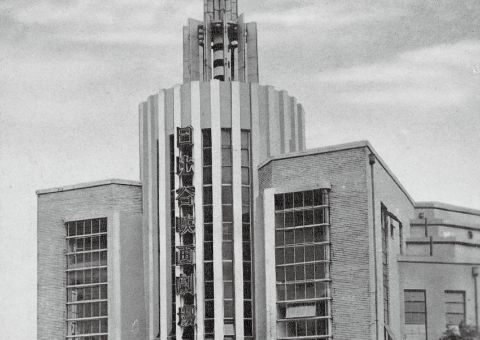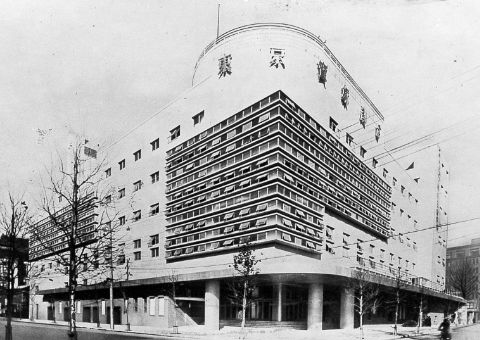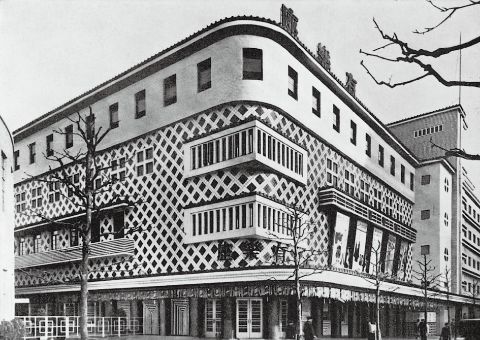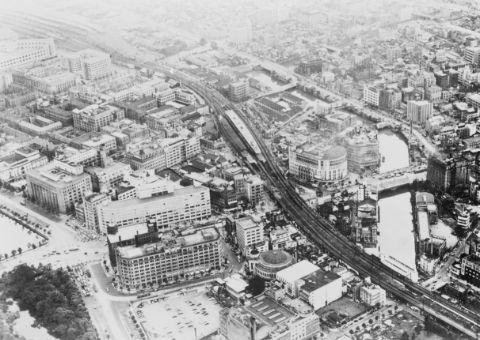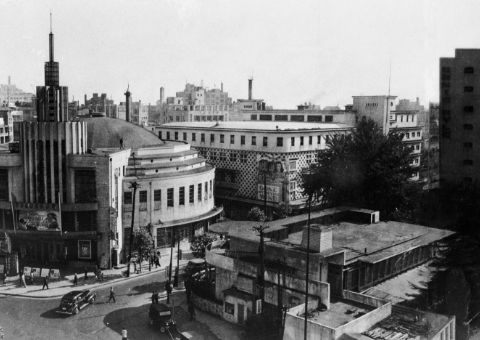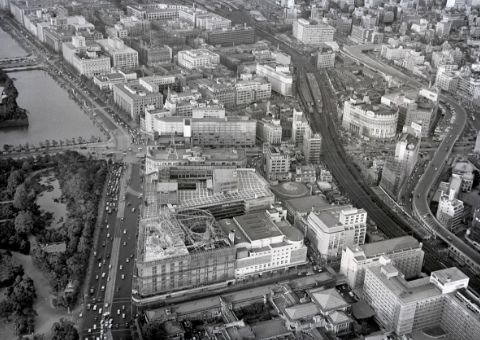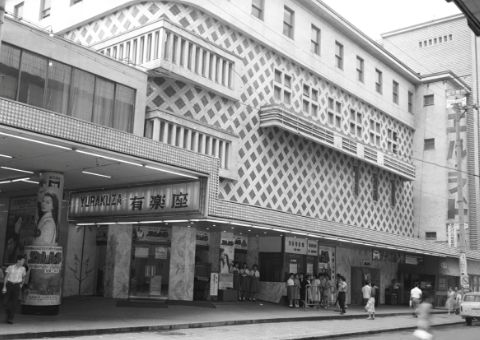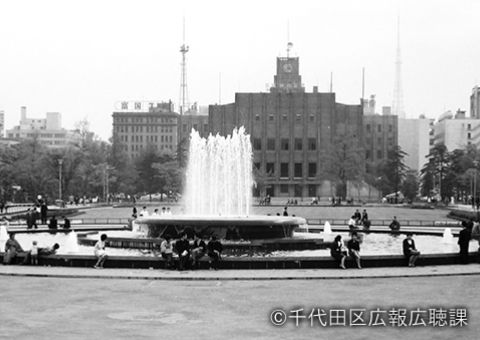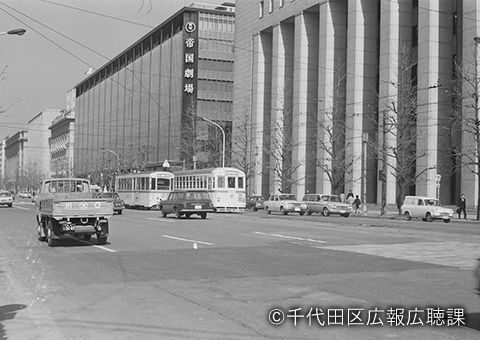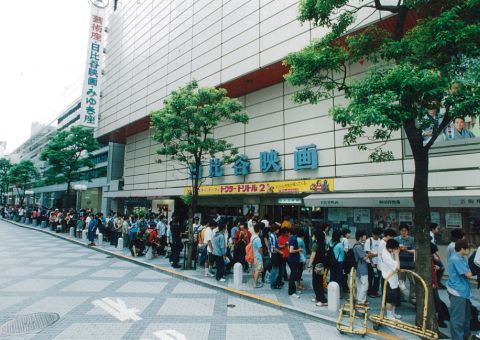Remembering
Hibiya
It has been about 140 years since Rokumeikan,
a banqueting house, was established.
The Hibiya area has been continuously evolving from a diplomatic base to a cultural
and artistic center and business base while responding to the demands of the times.
Now, we look back and remember the pathway to modern Japan.
-
Hibiya — The city that helped lead
the modernization of JapanSince the Meiji Restoration, Hibiya has enthusiastically paved the way in leading the modernization of Japan.
In 1883, “Rokumeikan” was established as a social meeting place for inviting foreign traders and diplomats, and in 1890, the Imperial Hotel was completed, acclaimed as the grandest large hotel in the East. Since that time, Hibiya has developed as Japan's international diplomatic hub.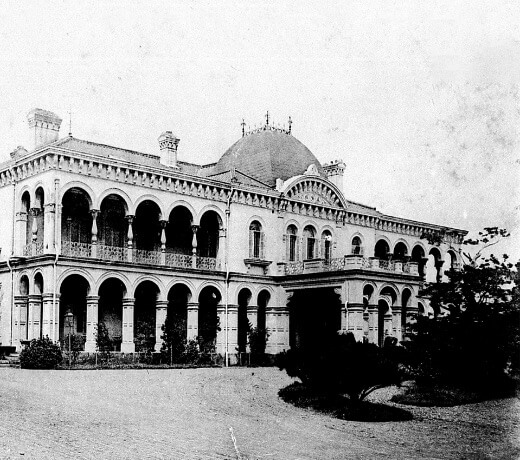
Rokumeikan -
Developing as
Japan’s entertainment centerAt the beginning of the Showa era, the Tokyo Metropolitan Hibiya Public Hall, which was a symbol of reconstruction after the Great Kanto Earthquake, was completed. It was known as “the sanctuary of music”, being the only music hall in Tokyo at the time. In 1934, the Tokyo Takarazuka Theater and Hibiya Movie Theater (“Hibiya Eiga Gekijo”) opened. In the following year, Yuraku-za started as a theater directly managed by the Tokyo Takarazuka Theater, and the history of Hibiya as a city of movies and theaters began. After World War II, various theaters such as Geijutsu-za, showcasing only theatrical works, and the movie theaters Miyukiza-za, and Hibiya Scala-za opened their doors consecutively. Furthermore, in 1963, the Nissay Theatre, which was appreciated as the greatest theater of the time, was established with the spirit of creating a world-leading theater. Hibiya has continuously and dynamically progressed as a center of entertainment in Japan.
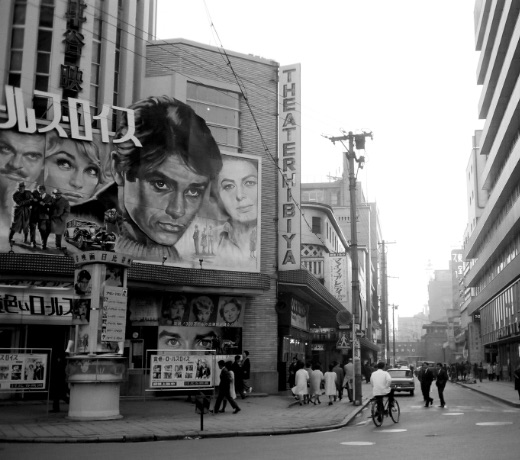
Hibiya Movie Theater -
Hibiya as a business base
While many entertainment facilities continuously opened, business-related facilities were also being constructed one after another in Hibiya. In 1930, the Sanshin Building, a symbolic building suitably representing the rich, upscale image of Hibiya was opened, then in 1960, the Hibiya Mitsui Building was completed and recognized as the greatest office building in the East at that time. Since then, various head offices of Japanese key industries were established in the area, such as the Nippon Telegraph and Telephone Public Agency Headquarters Building, known as the Hibiya Denden Building (currently NTT Hibiya Building), the Tokyo Electric Power Company Headquarters Building , and the Dai-Ichi Kangyo Bank Head Office Building, and gradually Hibiya evolved into the current city with its great variety of attractions.
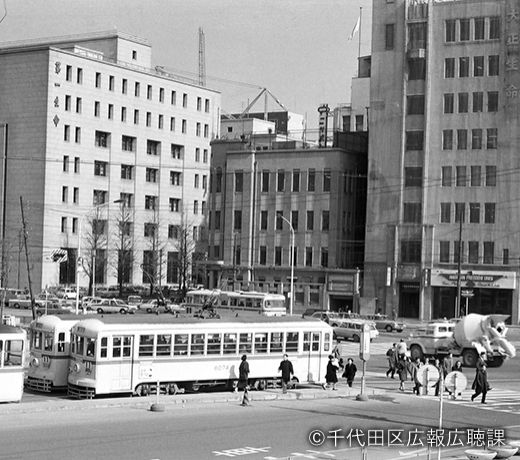
Business district along Hibiya Street
History of Hibiya
From the Meiji era, through Taisho, Showa, Heisei to Reiwa,
the times have constantly changed. Now, we look back on the evolution of Hibiya,
which has been a pioneer over the years
as a center of entertainment and business, in a chronology.
| 1883 (Meiji 16) | Rokumeikan completed |
|---|---|
| 1890 (Meiji 23) | Imperial Hotel completed |
| 1894 (Meiji 27) | Yurakucho Mitsui Shukaijo (meeting house) completed (European-style building completed in 1898) |
| 1903 (Meiji 36) | Hibiya Park opened, Hibiya Matsumotoro opened |
| 1908 (Meiji 41) | Yuraku-za completed |
| 1911 (Meiji 44) | Imperial Theatre completed |
| 1923 (Taisho 12) | Frank Lloyd Wright-designed Imperial Hotel, Hibiya Open-Air Concert Hall (large concert hall) completed |
| 1929 (Showa 4) | Tokyo Metropolitan Hibiya Public Hall, Shisei Kaikan completed |
| 1930 (Showa 5) | Sanshin Building completed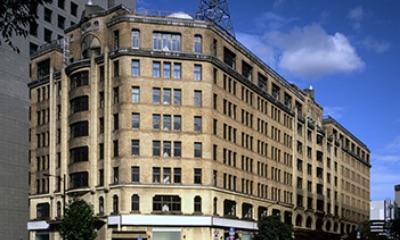 |
| 1934 (Showa 9) | Tokyo Takarazuka Theater, Hibiya Movie Theater completed |
| 1935 (Showa 10) | Yuraku-za was constructed as a theater directly managed by Tokyo Takarazuka Theater |
| 1955 (Showa 30) | Hibiya Scala-za completed |
| 1957 (Showa 32) | TOHO Headquarters Building (Miyuki-za, Chiyoda Theater, Geijutsu-za opened) completed |
| 1960 (Showa 35) | Hibiya Mitsui Building completed |
| 1961 (Showa 36) | Nippon Telegraph and Telephone Public Agency Headquarters Building (currently NTT Hibiya Building) completed |
| 1963 (Showa 38) | Nissay Theatre completed
 |
| 1964 (Showa 39) | Hibiya Station on the Hibiya Line opened |
| 1969 (Showa 44) | TOHO Twin Tower Building completed |
| 1970 (Showa 45) | Imperial Hotel Main Building completed |
| 1971 (Showa 46) | Hibiya Station on the Chiyoda Line opened |
| 1972 (Showa 47) | Tokyo Electric Power Company Headquarters Building completed, Hibiya Station on the Toei Line 6 (currently part of Toei Mita Line) opened |
| 1981 (Showa 56) | (Old) Dai-Ichi Kangyo Bank Head Office Building completed |
| 1983 (Showa 58) | Imperial Tower of Imperial Hotel completed |
| 1984 (Showa 59) | Hibiya Marine Building completed |
| 1987 (Showa 62) | TOHO Hibiya Building, Hibiya Chanter, Chanter Cine (currently TOHO CINEMAS Chanter) completed |
| 2007 (Heisei 19) | Theatre Creation, remm Hibiya completed |
| 2011 (Heisei 23) | The Basic Plan of Hibiya Area Urban Development established |
| 2015 (Heisei 27) | Hibiya Area Management Association established |
| 2018 (first year of Reiwa) | Tokyo Midtown Hibiya, TOHO CINEMAS Hibiya, new Godzilla statue completed |
| 2023 (Reiwa 5) | Toho Hibiya Promenade Building completed |

